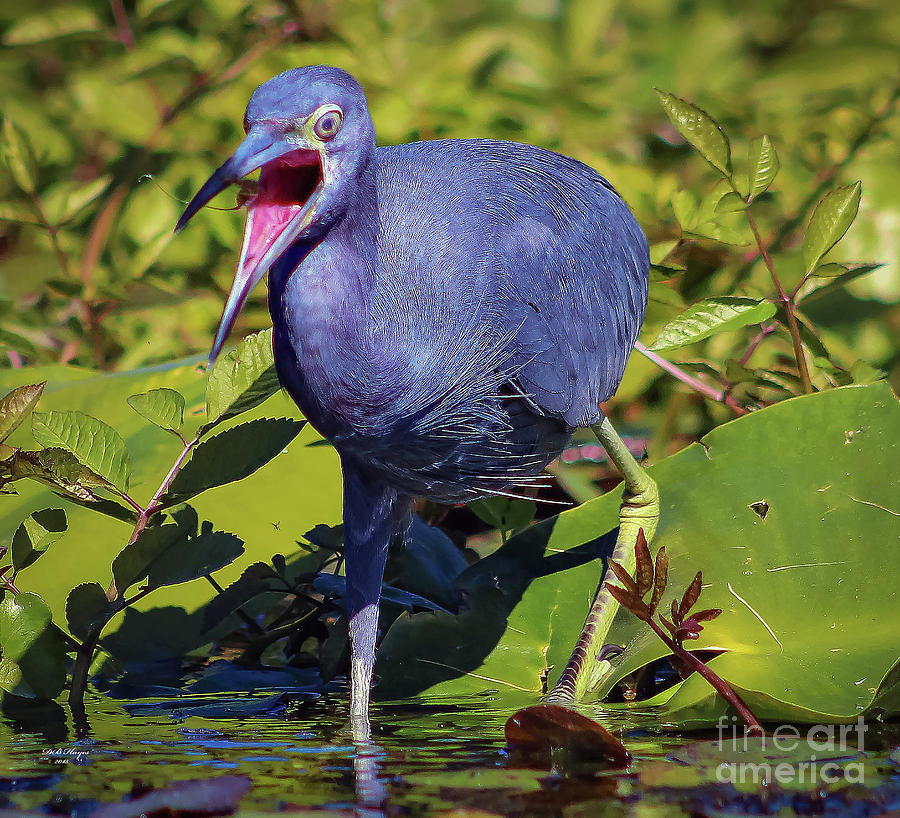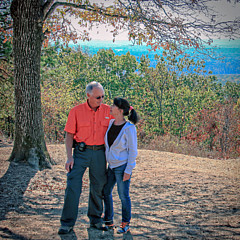
Angry Little Blue Heron - Egretta Caerulea

by DB Hayes
Title
Angry Little Blue Heron - Egretta Caerulea
Artist
DB Hayes
Medium
Photograph - Photography, Photograph, Print
Description
Fine Art America's (FAA) watermark does NOT appear on sold art as FAA removes the watermark before each sold copy is "museum quality" printed onto canvass, photo-paper, metal, acrylic or any of FAA's many other available medias regardless of which one is chosen by the buyer.
COPYRIGHT DISCLOSURE NOTICE: This is a Copyrighted and ALL Rights Reserved Protected image.
WE are proud to write our "Angry Little Blue Heron" image has been featured by the following highly respected art groups;
1 - Wild Birds Of The World: Featured on November 12, 2016
2 - Lady Photographers and Artists: Featured on November 12, 2016
3 - Poetic Poultry: Featured on November 14, 2016
Pictured is what looks to be an "angry" Little Blue Heron (scientific name is egretta caerulea) as it made its way toward Bill & I as I, Deb, photographed it while on our kayak in 2015 on the Wacissa River located about 25 miles east, southeast of Tallahassee, Florida. Maybe it was upset thinking we were getting too close for comfort. We decided to quickly give it plenty of room by paddling away. Following is some interesting information about this species.
The little blue heron (Egretta caerulea) is a small heron. It breeds in the Gulf states of the US, through Central America and the Caribbean south to Peru and Uruguay. It is a resident breeder in most of its range, but some northern breeders migrate to the southeastern US or beyond in winter. There is post-breeding dispersal to well north of the nesting range, as far as the Canada–US border.
The little blue heron's breeding habitat is sub-tropical swamps. It nests in colonies, often with other herons, usually on platforms of sticks in trees or shrubs. Three to seven light blue eggs are laid. The little blue heron stalks its prey methodically in shallow water, often running as it does so. It eats fish, frogs, crustaceans, small rodents and insects.
White little blue herons often mingle with snowy egrets. The snowy egret tolerates their presence more than little blue herons in adult plumage. These young birds actually catch more fish when in the presence of the snowy egret and also gain a measure of protection from predators when they mix into flocks of white herons. It is plausible that because of these advantages, they remain white for their first year.
All visits to our FAA-Pixels art sites are welcomed, encouraged and appreciated. Please visit often and, if you will, please tell your friends and family about our art sites. They may find something they like and thank you for the tip. Thank you for visiting.
"Art Soothes & Excites Life"
Deb & Bill Hayes
Uploaded
November 11th, 2016
Statistics
Viewed 345 Times - Last Visitor from Fairfield, CT on 04/24/2024 at 2:35 PM
Embed
Share
Sales Sheet
Comments (9)

Hazel Holland
Great timing in this marvelous capture, Bill and Deb! Love it! L/F
DB Hayes replied:
Thank you very much Hazel for your gracious compliment, visit and the L/F. Bill and Deb

William Tasker
Hi Deb! Your fantastic image has been featured by Wild Birds Of The World. L/F
DB Hayes replied:
Thank you very much William for featuring my image; "Angry Little Blue Heron" in your "Wild Birds of the World". It made my weekend. Deb

Linda Crockett
Amazing shot! l/f
DB Hayes replied:
Thank you Linda - I was so amused by this heron's attitude I almost couldn't keep still long enough to get the shots all the while on a kayak. Thanks again. Deb













































